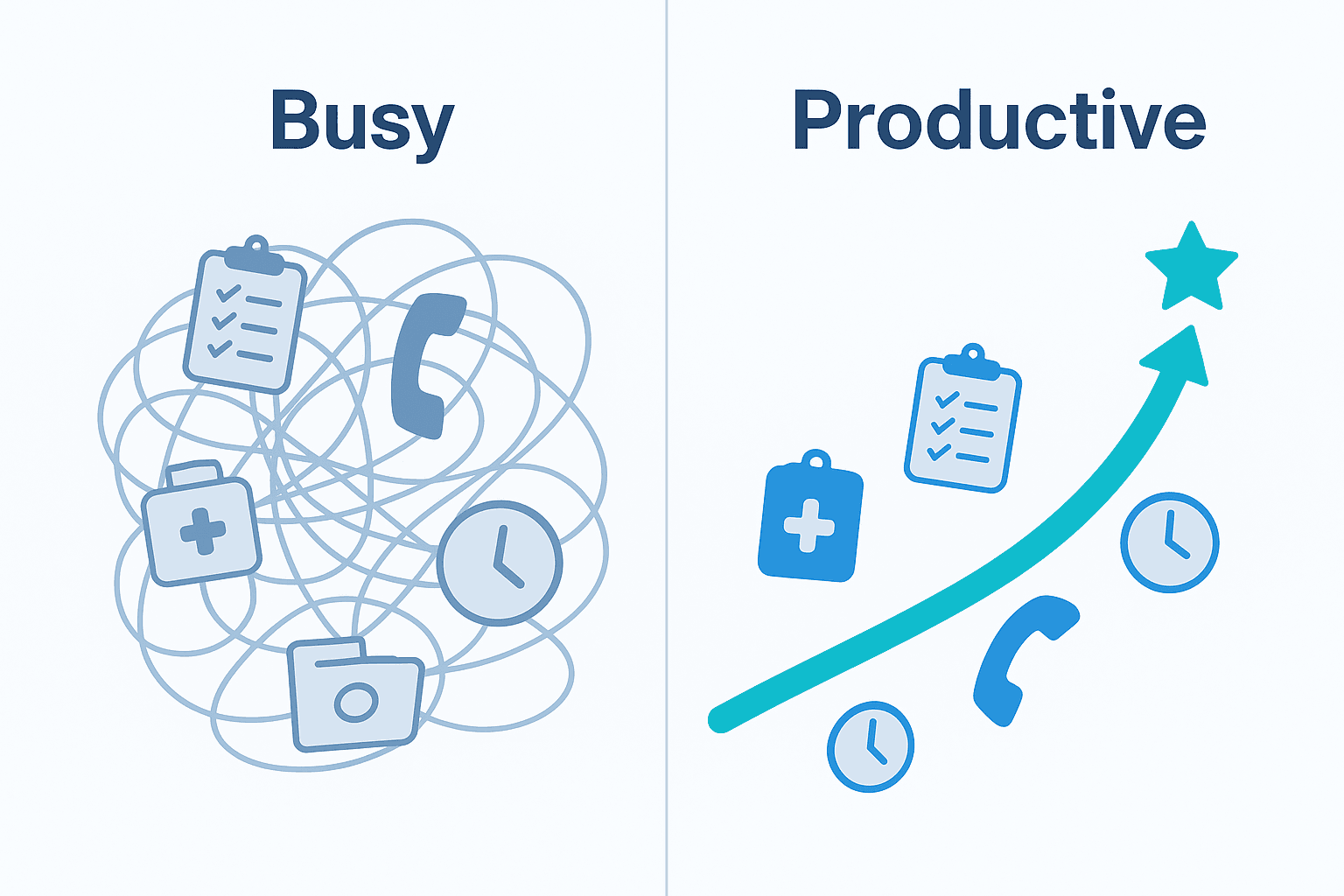Selling your Occupational and Hand Therapy practice in Ohio presents a significant opportunity, especially with current favorable market conditions. The key is turning that opportunity into a successful outcome. A properly structured sale protects your legacy, maximizes your financial return, and ensures a smooth transition for your staff and patients. This guide provides a clear overview of the market, key considerations, and the steps involved in navigating this process.
Market Overview
The timing for considering a sale is strong. The broader therapy market is growing, and projections show an 11% increase in employment for occupational therapists over the next decade, a rate much faster than average. This growth is fueling interest from buyers, including private equity groups who are actively seeking well-run practices. Ohio, with its solid healthcare infrastructure, is a prime location for these buyers. For a practice owner, this means there is a healthy demand for established businesses with a consistent patient base and strong reputation. The question is not whether buyers exist, but how to position your practice to attract the right buyer.
Key Considerations for Ohio Practices
Beyond the market, your practice’s specific attributes are what drive value. In Ohio, buyers will look closely at three main areas:
- State Regulatory Compliance. You must have all your documentation in order. This includes demonstrating full compliance with the Ohio OTPTAT Board and the relevant state codes. Any ambiguity here can delay or derail a transaction.
- Operational Health. A diverse payer mix, efficient billing cycles, and low patient turnover are signs of a healthy business. Buyers pay a premium for stability and predictable revenue streams.
- Staff and Transition. A buyer’s biggest concern is often continuity. The likelihood that your key therapists, especially Certified Hand Therapists, will remain after the sale is a major factor in their decision. A clear plan for transition and staff retention is critical.
Market Activity
Today s market is not about just finding a single local buyer. It is defined by strategic acquirers and private equity firms looking to build regional or national platforms. These groups are often searching for well-run practices with annual revenues over $500,000 to serve as a foundation for growth. For you, this means a potential sale is less like a listing and more like a competitive process. These buyers bring financial resources and operational expertise, but they also conduct intensive due diligence. Successfully navigating these conversations requires preparation and a strategy to create competitive tension, ensuring you are negotiating from a position of strength, not reacting to a single offer.
The Sale Process at a Glance
Selling your practice is a multi-stage journey. While every deal is unique, the path generally follows a clear sequence. Understanding these steps helps you prepare for what is ahead.
| Stage | What It Involves | Common Challenge |
|---|---|---|
| 1. Valuation & Strategy | Determining your practice’s market value and your personal goals. | Relying on “rules of thumb” instead of a data-driven valuation. |
| 2. Preparation | Organizing financial records, compliance documents, and operational data. | Having disorganized books that raise red flags for buyers. |
| 3. Confidential Marketing | Identifying and engaging a curated list of qualified buyers. | Losing confidentiality or wasting time with unqualified buyers. |
| 4. Negotiation | Evaluating offers and negotiating key terms (price, structure, your role). | Focusing only on price and ignoring critical post-sale terms. |
| 5. Due Diligence | The buyer verifies all information about your practice. | Unpreparedness, leading to deal delays or price reductions. |
| 6. Closing | Finalizing legal documents and transferring ownership. | Navigating complex legal and financial closing requirements. |
How Your Practice is Valued
Many owners think their practice’s value is based on revenue or assets. However, sophisticated buyers value it based on its profitability. The key metric is Adjusted EBITDA (Earnings Before Interest, Taxes, Depreciation, and Amortization). We start with your net income and add back certain expenses like your personal salary (if it’s above market rate), one-time costs, and other owner-related perks. This gives a true picture of the practice’s cash flow. That Adjusted EBITDA figure is then multiplied by a specific number, or “multiple.” This multiple is not random; it is determined by factors like your reliance on a single therapist, your mix of insurance payers, and your potential for future growth. Two practices with the same revenue can have very different valuations.
Planning for Life After the Sale
The transaction is not the end of the story. A successful sale also involves carefully planning for what comes next. The decisions you make during negotiations will shape your future for years to come.
Your Future Role
Do you want to retire immediately, or would you prefer to stay on for a few years, focusing only on patient care without the administrative burden? Your exit plan can be structured to fit your personal timeline. Some deals involve an “earnout,” where part of your proceeds is tied to the practice’s performance after the sale, while others can provide a clean break.
Protecting Your Legacy and Team
A major concern for owners is the fate of their staff and the patient care standards they have built. The right buyer will see your team as a key asset. We help you negotiate terms that protect your staff and ensure the culture you created continues.
A Second Payout
Many owners choose to “roll over” a portion of their sale proceeds into equity in the new, larger company. This allows you to take cash off the table now while also participating in the future growth of the platform, offering a potential second, often larger, payout when the new company is sold again down the road.
Frequently Asked Questions
What are the current market conditions for selling an Occupational & Hand Therapy practice in Ohio?
The market is favorable for selling your practice in Ohio, with strong employment growth projected for occupational therapists and active interest from strategic buyers and private equity groups looking for well-run practices. Ohio’s solid healthcare infrastructure makes it an attractive location for buyers.
What key factors do buyers in Ohio consider when evaluating an Occupational & Hand Therapy practice?
Buyers focus on three main areas: 1) State Regulatory Compliance, ensuring all documentation and compliance with the Ohio OTPTAT Board and state codes; 2) Operational Health, including a diverse payer mix, efficient billing, and low patient turnover; 3) Staff and Transition plans, especially retention of key therapists like Certified Hand Therapists to ensure continuity after sale.
How is the value of an Occupational & Hand Therapy practice determined?
Valuation is primarily based on the practice’s profitability, measured by Adjusted EBITDA (Earnings Before Interest, Taxes, Depreciation, and Amortization). Adjusted EBITDA is calculated by starting with net income and adding back owner-related expenses. This figure is multiplied by a multiple determined by factors like therapist reliance, insurance mix, and growth potential, resulting in the practice’s market value.
What does the sale process for an Occupational & Hand Therapy practice typically involve?
The sale process generally involves six stages: 1) Valuation & Strategy, 2) Preparation of financial and compliance documents, 3) Confidential Marketing to qualified buyers, 4) Negotiation of terms, 5) Due Diligence by the buyer, and 6) Closing with legal and financial transfer of ownership. Each stage has common challenges that sellers should be prepared for.
How can practicing owners plan for life after selling their Occupational & Hand Therapy practice?
Owners can tailor their exit plan to their personal goals, such as retiring immediately or staying on for a transitional period without administrative duties. Options include earnouts, equity rollover for future payouts, and negotiating terms to protect staff and maintain the practice’s culture. Planning ensures a smooth transition and aligns the sale with the owner’s financial and lifestyle objectives.



